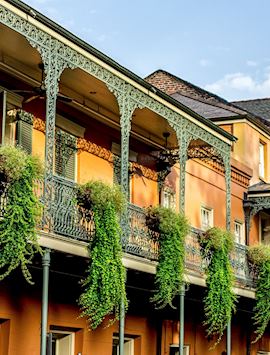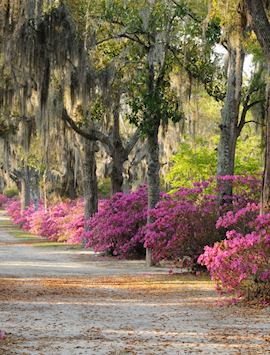Encompassing everything from delicate benne wafers in Charleston to a New Orleans’ po’boy sandwich overflowing with fried crayfish, ‘Southern food’ is a misleading phrase. In reality, the area boasts a vast array of regional cuisines that vary depending on a city’s particular history. For example, South Carolina’s dishes have a distinctly Bantu bent — a legacy of the enslaved people who worked the land and cooked the food in area plantations for generations.
A comprehensive guide to Southern cuisine would take volumes. Instead, consider this a simple hors d'oeuvre, intended to whet your palette for your next trip to the region.
Cuisine in Louisiana: beignets, chicory & gumbo

Even though its food is unlike anything in the rest of the South, New Orleans is the indisputable culinary capital of the American region. You can spend days unpicking the tangle of cultures and influences that lead to the distinctive dishes you’ll find here, from gumbo and jambalaya to oysters Rockefeller and hurricane cocktails. In fact, our guide to food in New Orleans provides just a bare introduction to the city’s rich gastronomic culture.
For a more in-depth look, we suggest a food tour of the French Quarter, which combines a tasting tour with a look at the history that defines the city and its gastronomy. The quarter is compact, walkable, and exploding with personality, from the brightly painted townhouses to the raucous jazz parades that make their way through the streets. You’ll visit a few of the city’s best-known eateries and sample local classics as you go.
Where you go will vary depending on the day, but you’re likely to have beignets, a local variation on doughnuts. These squares of delicate dough are fried in sizzling hot oil, where they billow up into pillowy golden puffs redolent of yeast. Served piping hot and coated in a thick snow of powdery sugar, the treats are often paired with a cup of chicory — a local coffee substitute that’s definitely an acquired taste.
Other nibbles might include belly-warming gumbo stew, messy po’ boy sandwiches, or chewy, nutty pecan pralines. Along the way, you’ll learn about the waves of immigrants from around the world who influenced the food, including French, Spanish, Sicilian, and, more recently, Vietnamese. You’ll also hear about the contributions of the many enslaved African, Caribbean, and native people who created food here in the past and how their influence lingers today in the city’s vibrant Black community.
Food in Birmingham, Alabama: fried green tomatoes & white barbecue sauce
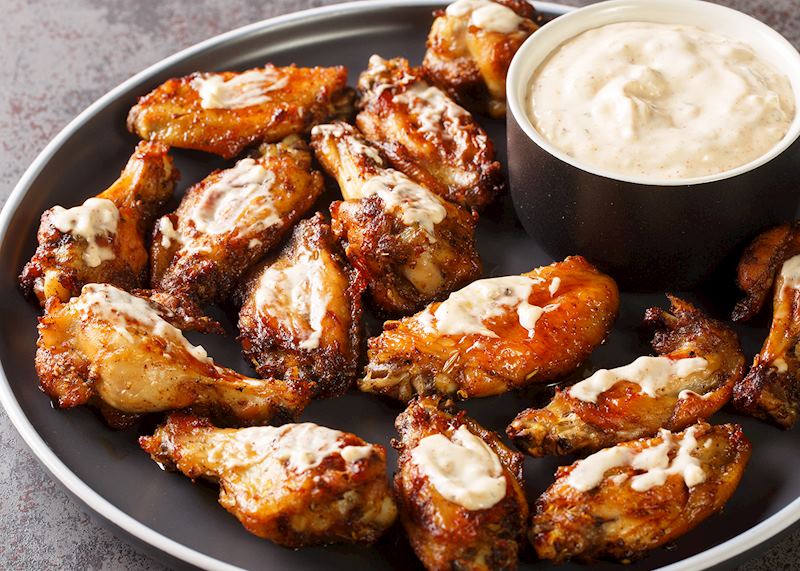
Venture east from Louisiana and you’ll find the cuisine rapidly shifts to more ‘classic’ Southern dishes — buttermilk-fried chicken, collard greens, macaroni and cheese, chicken-fried steaks, and fried okra, to name just a few. And, of course, there’s barbecue.
Often abbreviated as BBQ or just Q, barbecue is a complicated subject, if only because the definition changes depending on where you are. Loosely, it’s slow-cooked meat, often (but not always) pork, served with a sauce. But that definition belies both the eye-rolling succulence of the dish and the remarkable diversity of variations you can find.
Not only do styles vary with location but also between each individual cook, called a pitmaster. Each creates their own signature blend of smoke, sauce, and meat, an alchemy that can inspire a following bordering on fanaticism. Locals will sometimes stand in line for hours for a taste from a well-loved pitmaster.
In Birmingham, you’re most likely to get a bun packed with shredded pork butt (pork shoulder) that’s been cooked low and slow over a smoky hickory wood fire and slathered with the state’s white sauce — a piquant mix of Duke’s mayonnaise, sharp vinegar, and pungent garlic, perhaps with a dash of horseradish or cayenne for a little extra fillip. That said, the sauce is incredibly versatile, and you can find it served on everything from sausages and grilled chicken to corn on the cob and roasted veggies.
Food in Memphis, Tennessee: Memphis city BBQ & fried peanut butter and banana sandwiches
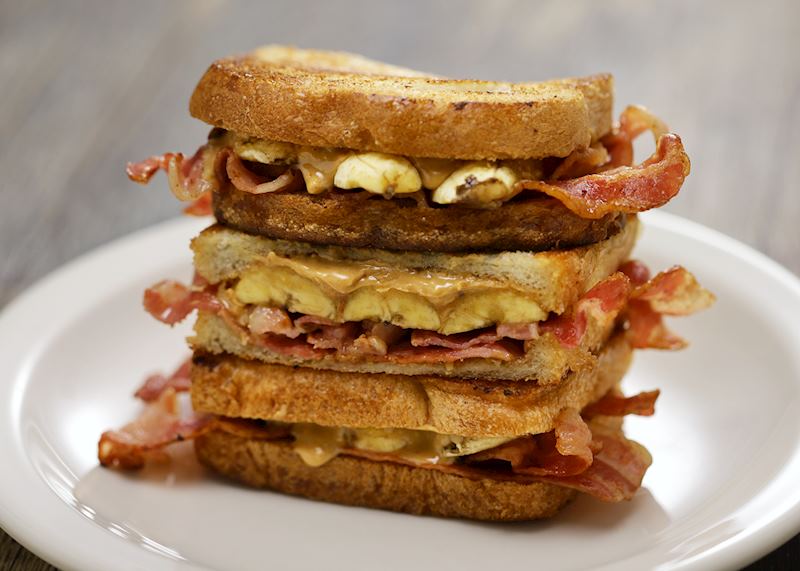
Tucked into a curve of the Mississippi River, Memphis is best known for its musical history. This is, after all, the homes of blues, soul, and rock ‘n’ roll music, as well as Sun Studio and, of course, Graceland. It’s Elvis Presley’s legacy that makes Memphis one of the best places to try an ‘Elvis sandwich’. Alleged to be the King’s preferred snack, it's a peanut-butter sandwich that also includes bacon, honey, and bananas, which is then either griddled or deep fried.
Memphis is also one of the South’s barbecue hot spots, with its own signature style. Ribs are king here (though you’ll find every cut of pork, as well as chicken and beef). The sauce is tomato-based with a puckery dash of vinegar, gentle sweetness from brown sugar or molasses, and levels of spice that range from mild to scorching. Be sure to consult the menu carefully based on your personal tolerances.
This is also a great city if you want to try fried catfish. This bottom-feeder used to be considered ‘trash fish’ but the genius cooks of the region turned it into a highly sought after delicacy. Head to Green Beetle, the city’s oldest tavern, for a plate — singer Janet Jackson says it’s the best she’s ever tasted.
Nashville, Tennessee: hot chicken
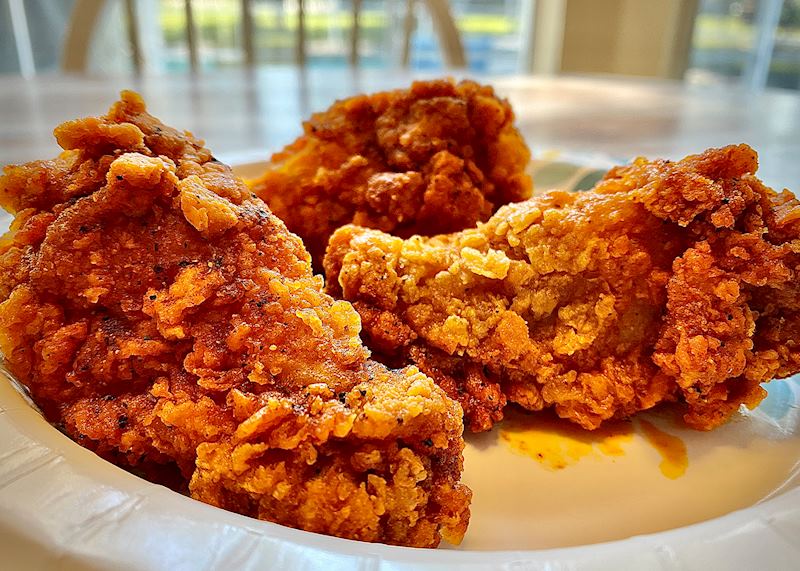
Country cousin to Memphis, Nashville is less known for its barbecue and more for its hot chicken. A fiery fried chicken, it starts with a kicky marinade of buttermilk, cayenne, paprika, and garlic, followed by a layered crust that adds in lots more peppery heat. The result: a shatteringly crunchable crust that curls your nose hairs and sets your mouth on fire. Underneath, you’ll find juicy chicken that’s deeply seasoned.
Hot chicken is just one of the dishes you’re likely to try on a walking food tour of downtown Nashville. For three hours, you’ll wander between lunch spots, diners, and BBQ joints, nibbling on the city’s signature dishes. As you go, you’ll hear about the importance of sights like Nashville’s Country Music Hall of Fame and Ryman Auditorium, home to the Grand Ole Opry country music show for many decades.
Food in Charleston, South Carolina: benne wafers & she-crab soup
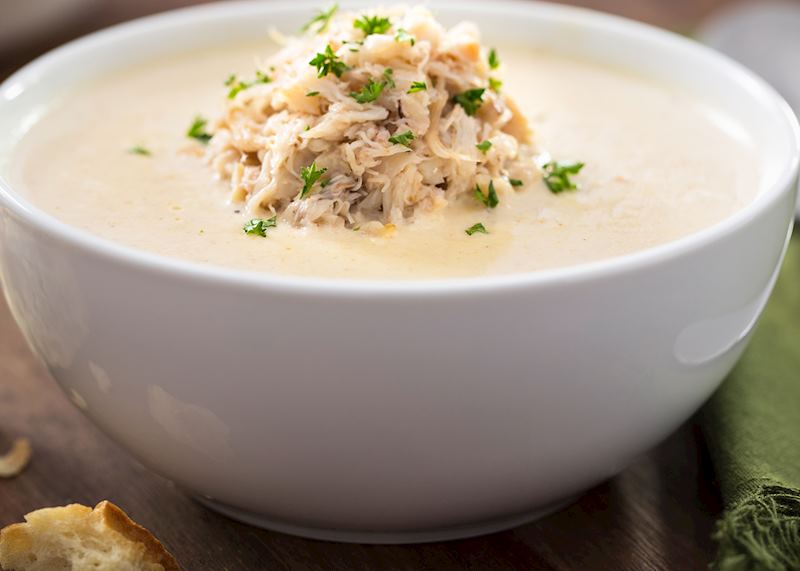
With its tall narrow houses and leafy palm trees, Charleston is best known for its handsomely restored historic district. However, it’s also one of the South’s culinary hot spots, thanks to the Gullah Geechee culture that you can find in the region.
The isolated nature of the plantations along the coast — often on islands — gave rise to a distinctive creole culture among the enslaved African people who worked to preserve part of their original West African language and ways of life.
For instance, ‘benne’ is the Bantu word for sesame, explaining why the seed-studded cookies are called benne wafers in Charleston. Sweet, salty, and delicately crisp, they melt in your mouth with a nutty taste from the benne seeds.
A walking tour of the historic district will give you the chance to nibble some of these renowned treats at the Olde Colony Bakers — one of the first places to sell them on a commercial scale. You’ll also try grits (despite the name, it’s a creamy cornmeal porridge), pecan pralines, and, of course, barbecue.
South Carolina has (arguably) the greatest diversity of barbecue styles — aficionados claim there are four — but the one you’ll find most in this part of the state is based on mustard. In fact, the region from Columbia to Charleston is sometimes known as the ‘mustard belt’. Whole hog roasts are the norm here — entire pigs spitted and turned over a smoky hickory-and-oak fire before being mopped with the tangy mustard sauce.
The city’s proximity to the ocean and the tidal marshes also means that you’ll find plenty of seafood. An annual highlight of the culinary calendar here is soft-shell season. Early in the spring each year, the local blue crabs shed their hard winter shells and for a fleeting few days or weeks, the whole crab is tender enough to eat. During that time, chefs and diners both rejoice in the bounty with soft-shell crabs appearing on menus across the region.
The rest of the year, you’ll still find crab everywhere, from crisp fried crab cakes to luxuriously creamy she-crab soup, a rich seafood bisque topped with a dollop of crab roe.
Food in Savannah, Georgia: peaches, boiled peanuts & Scottish pies
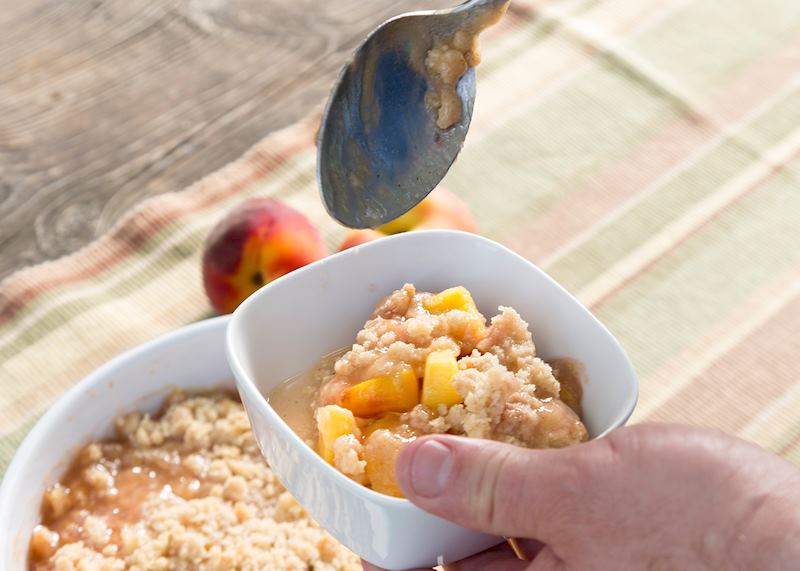
Georgia is known as the Peach Tree State for a reason — during the summer months, the delicate, fragrant fruit dominates the culinary scene. You’ll find it in everything from salads to ice cream, but probably the best-known preparation is the peach cobbler.
A classic summer dessert, the cobblers are composed of sliced peaches cooked with sugar and topped with a baked dough that (if you squint) looks a bit like cobblestones. ‘Best cobbler’ in Savannah is a hotly contested title and very subjective, but a popular contender is The Crystal Beer Parlor’s offering. You can also get Southern classics like shrimp and grits or fried green tomatoes.
The state also produces more than 50 per cent of the North American peanut crop most years, and you’ll find the legumes everywhere. This is also one of the only places in the US where you can find them boiled. Green peanuts, still in the shell, are boiled in salty water for hours, rendering them tender, briny, and entirely unlike the crunchy nuts that are found elsewhere. You can often find them sold at roadside stands in sodden paper bags — they’re unexpectedly delicious.
In addition to traditional Southern foods, Savannah is also home to a lively international food scene, with cuisines from around the world. A guided food tour can give you a chance to sample everything from artisanal honey and salt to classic Scottish meat pies.
Read more about trips to the American South
Start thinking about your experience. These itineraries are simply suggestions for how you could enjoy some of the same experiences as our specialists. They're just for inspiration, because your trip will be created around your particular tastes.
View All Tours in The American South


